Seaweeds of the South African South Coast


Order Ceramiales
Family Ceramiaceae
Antithamnionella sp
Plants mainly creeping, with erect axes up to 2.5 mm tall. Repent axes up to 55 µm in diameter, the cells to ca. 175 µm long, all cells with regularly 4 laterals, indeterminate laterals replacing one of the determinate laterals, in vigorously growing erect axes every third segment, in repent filaments up to every segment. Attachment by haptera, usually one per segment of the prostrate axes, arising from the basal cell of one of the branchlets. Determinate branchlets up to 200 µm long (to 400 µm just below carposporophytes), with the basal cell almost similar to the other cells and unbranched, the next few cells with a branch alternately left and right; the laterals not really distinct from the main axis, but branching only from the second segment. Gland cells variable in number, from virtually none to two (to several) per branchlet, usually on the third or fourth cell from the base (on the branchlets immediately below a carposporophyte, also higher up). Gland cells ovate, ca. 15 (– 25) µm in largest diameter.
Tetrasporangia borne singly on the basal cell of the branchlets, measuring ca. 40-50x35-40 µm, tetrahedrally divided. Male stands on virtually all but the topmost segments of the branchlets, up to 4 stands per cell, consisting of 2(-3) vegetative cells, each bearing a few spermatangia. Female stands (when successful) seem to terminate vegetative development. About three gonimolobes present at the same time, when mature ca. 150 µm in diameter, the individual carpospores ca. 35 µm in largest diameter, in the gonimolobe all spores ripening simultaneously.
This species is rather similar to A. multiramosa Athanasiadis from southern Australia (Womersley, 1998) but A. multiramosa has 5 or 6 branchlets per main axial cell instead of the regular four in our species.
Collections, ecology and regional distribution
Known only from Mbotyi (46).
Note: These Mbotyi specimens are very similar to a few thalli collected from Bird Island (38) and they may represent the same species (see later figures).
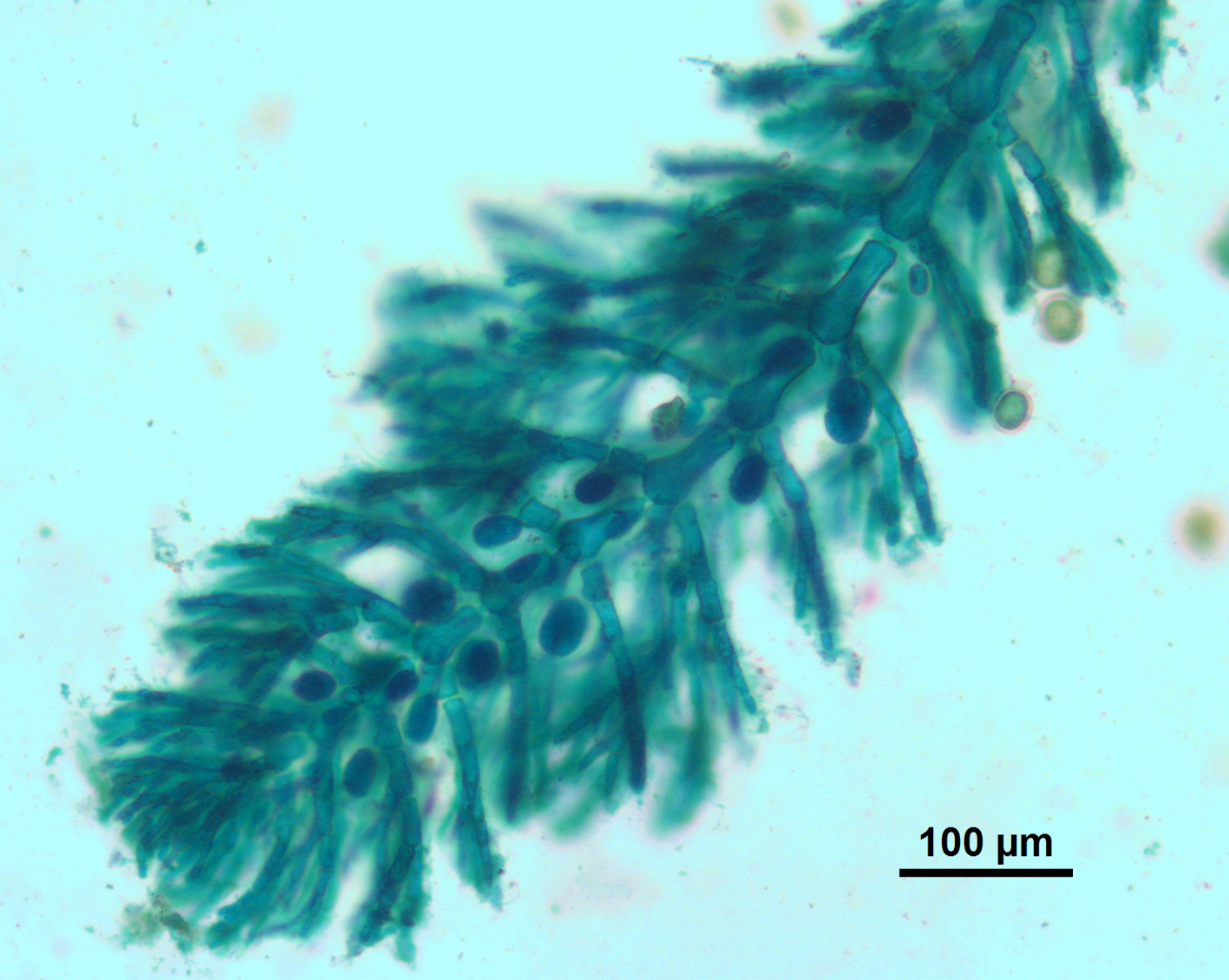
Antithamnionella sp, Mbotyi. Tetrasporangial plant, stained slide.
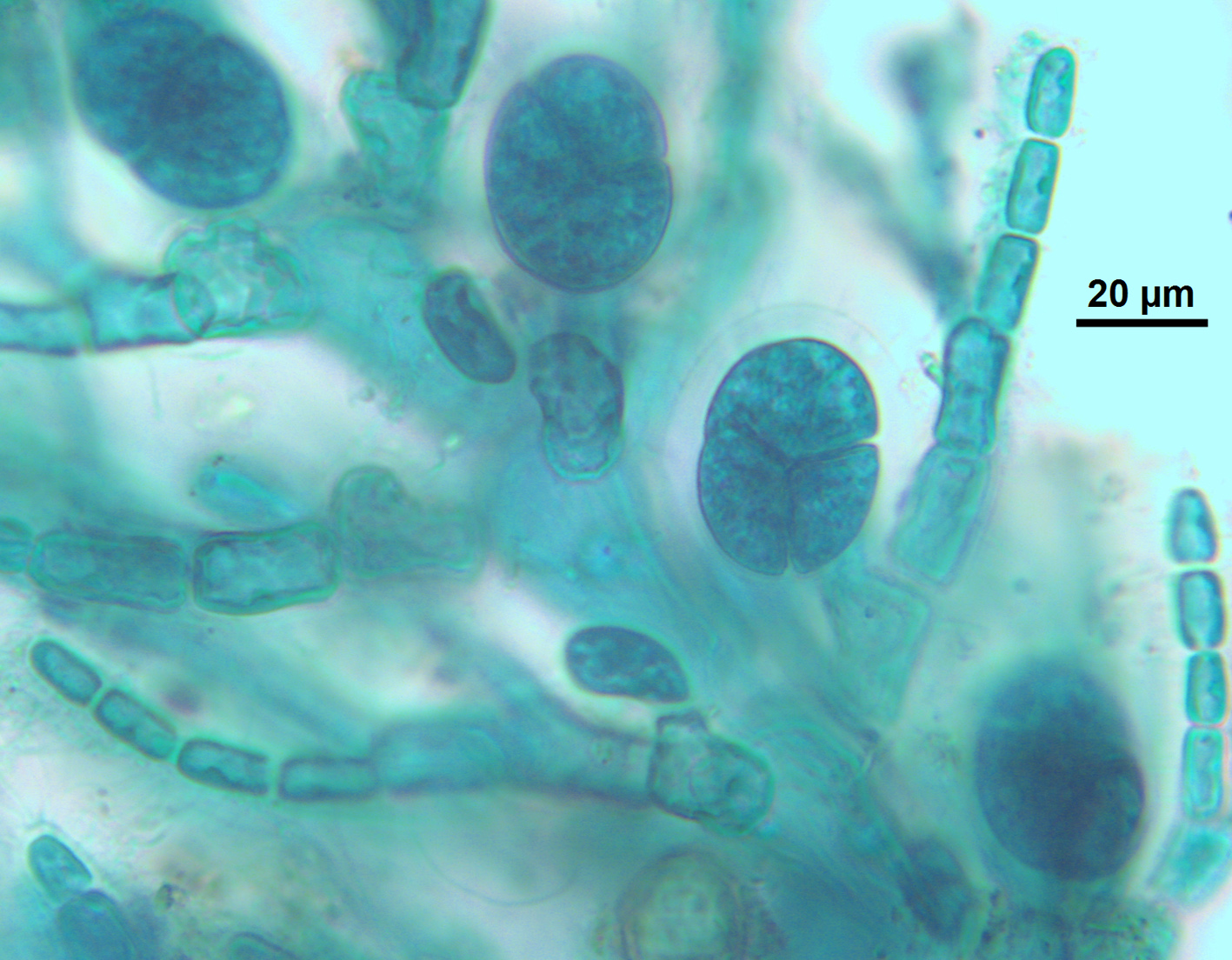
Antithamnionella sp, Mbotyi. Detail of tetrasporangia, stained slide.
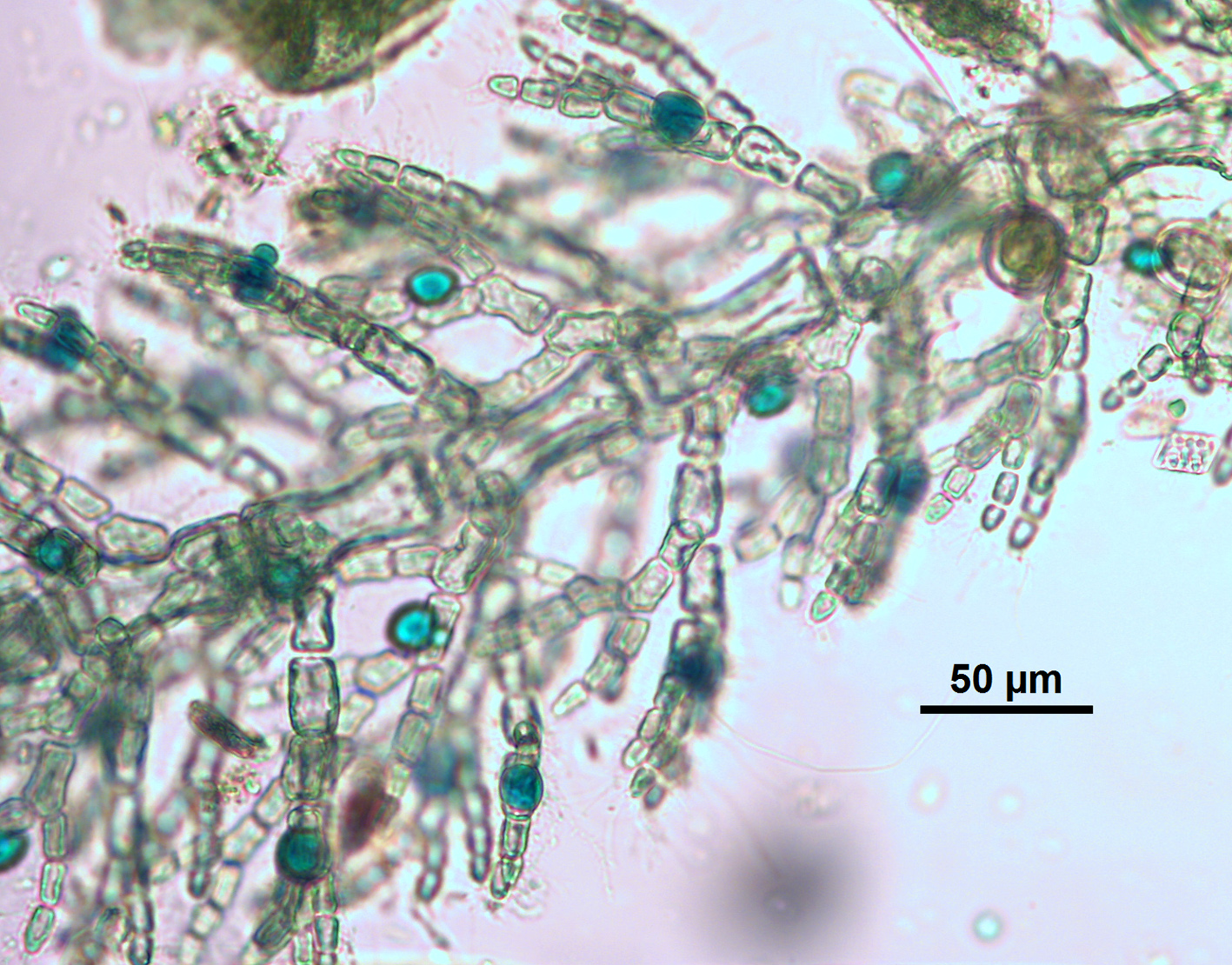
Antithamnionella sp, Mbotyi. Sterile plant, showing blue-stained gland cells.
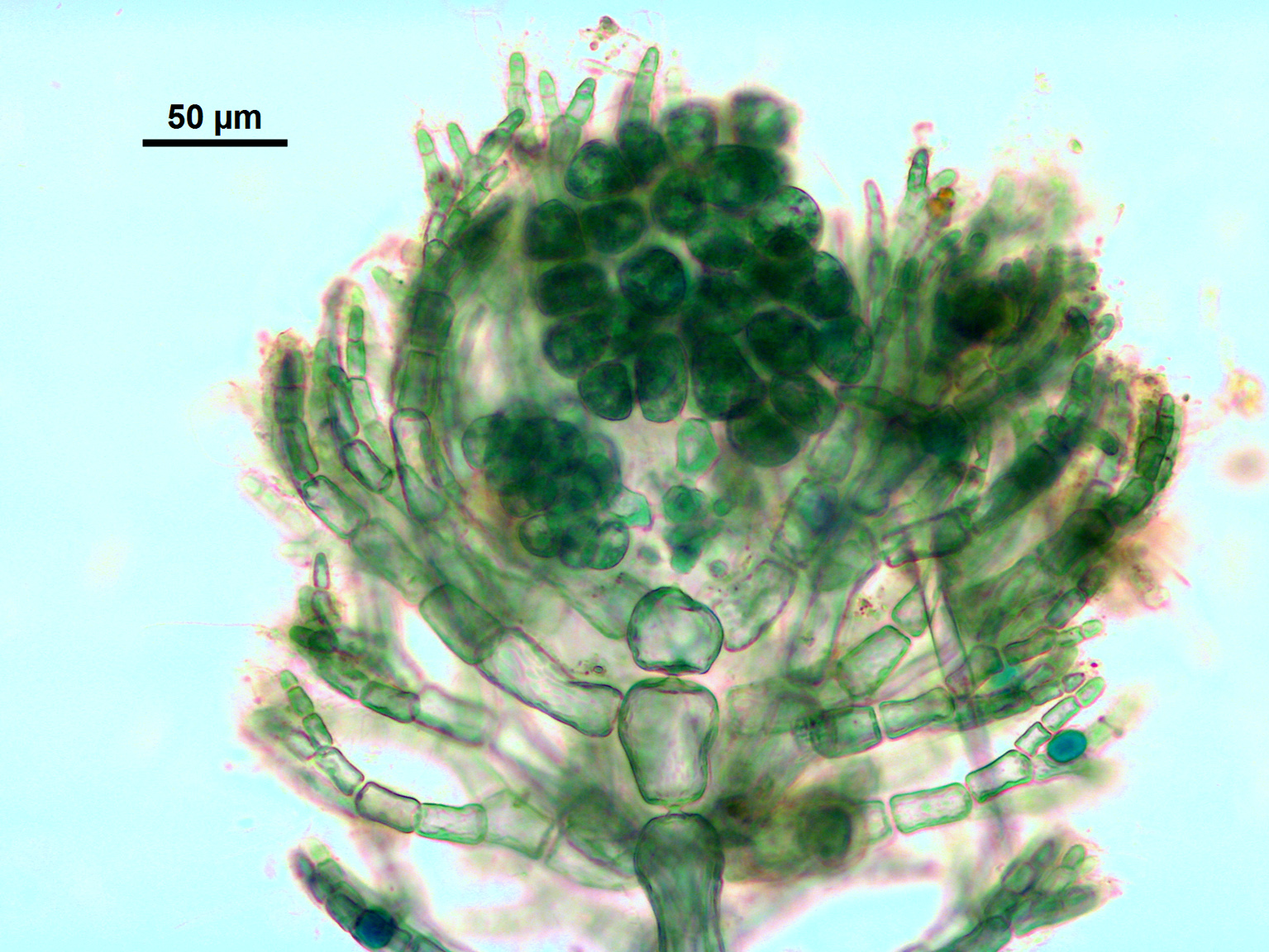
Antithamnionella sp, Mbotyi. Carposporophyte, stained slide.
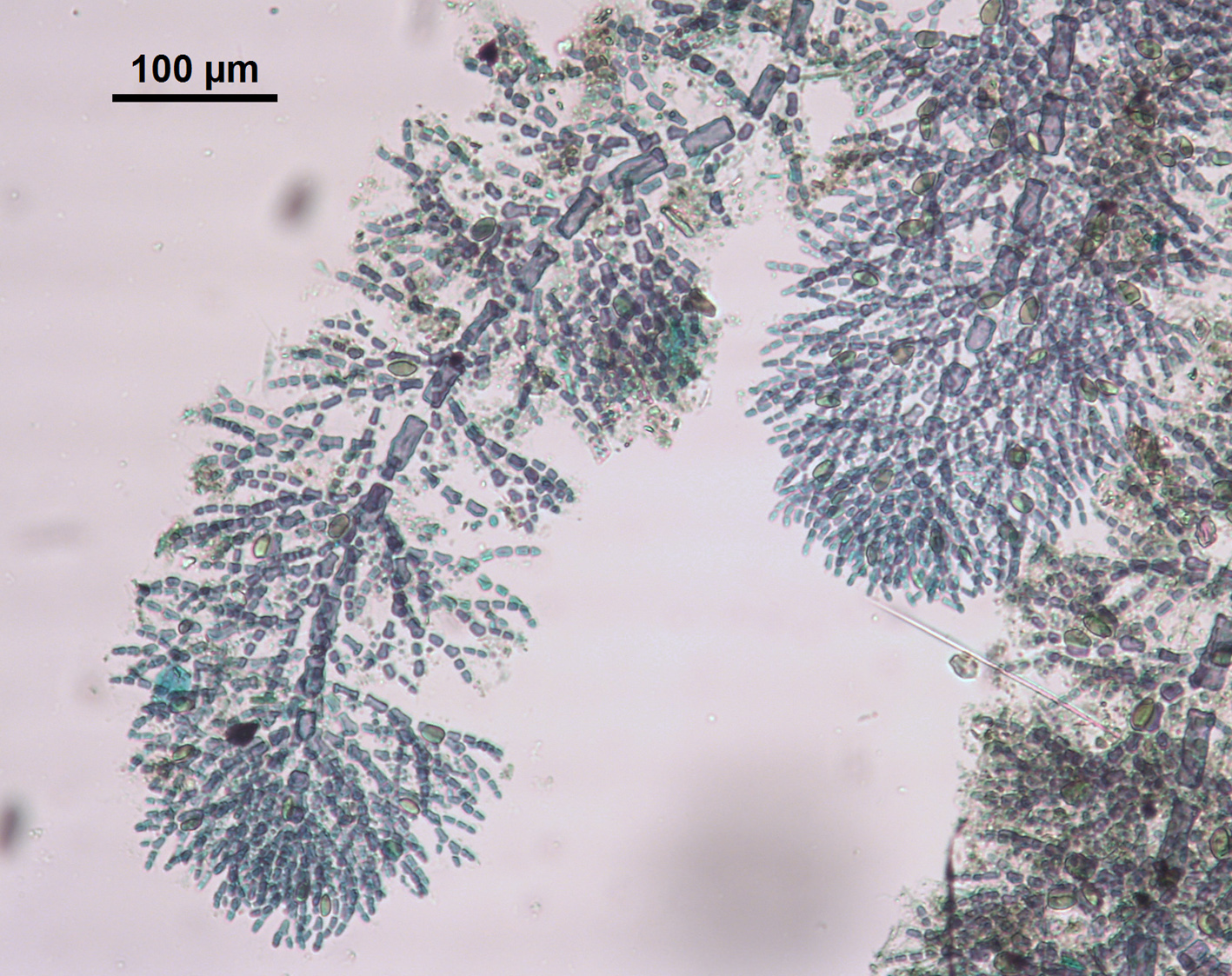
Antithamnionella, Bird Island. This entity may be the same as our Antithamionella sp. Stained slide.
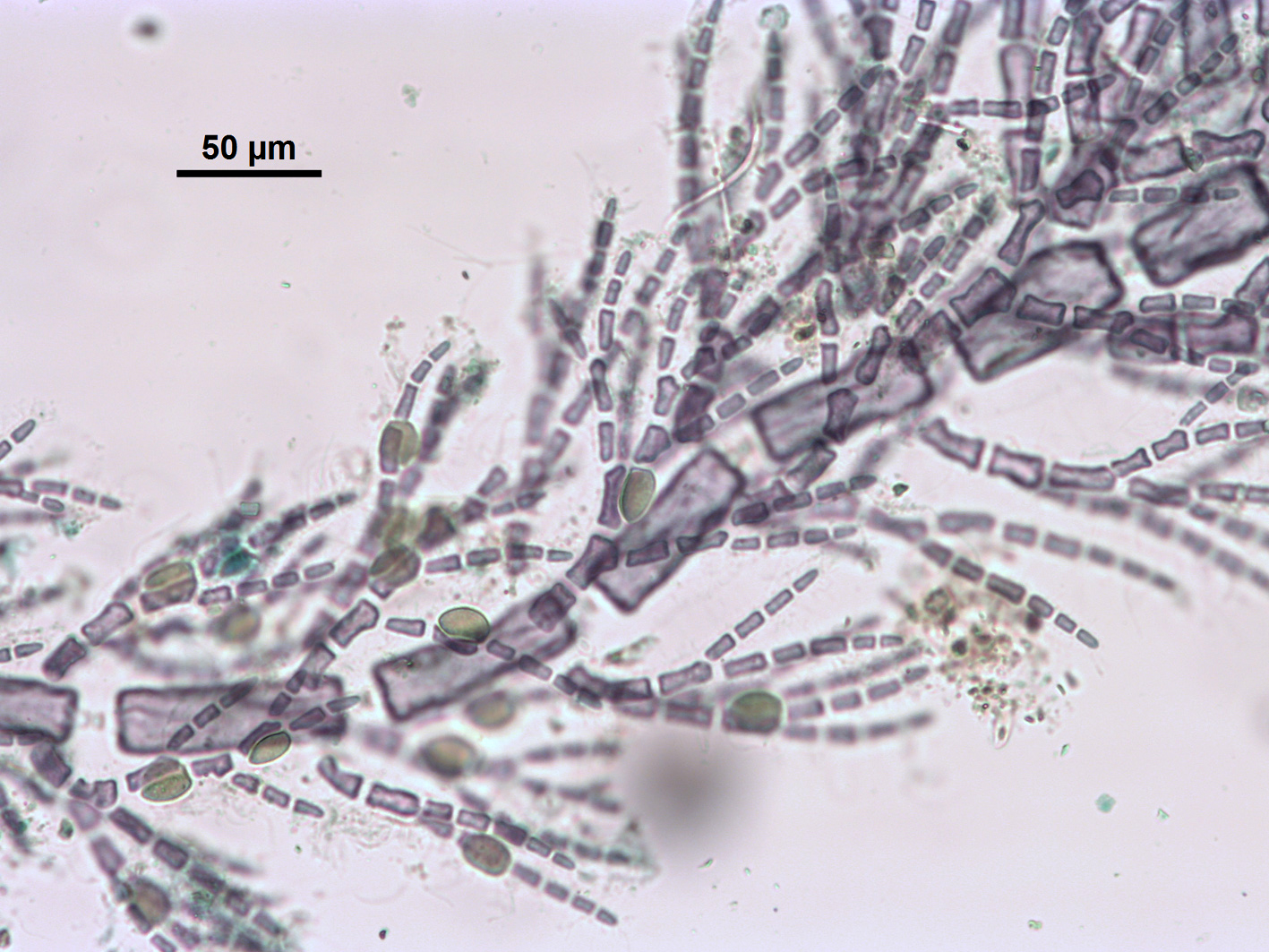
Antithamnionella, Bird Island. This entity may be the same as our Antithamionella sp. Note the gland cells (stained slide).
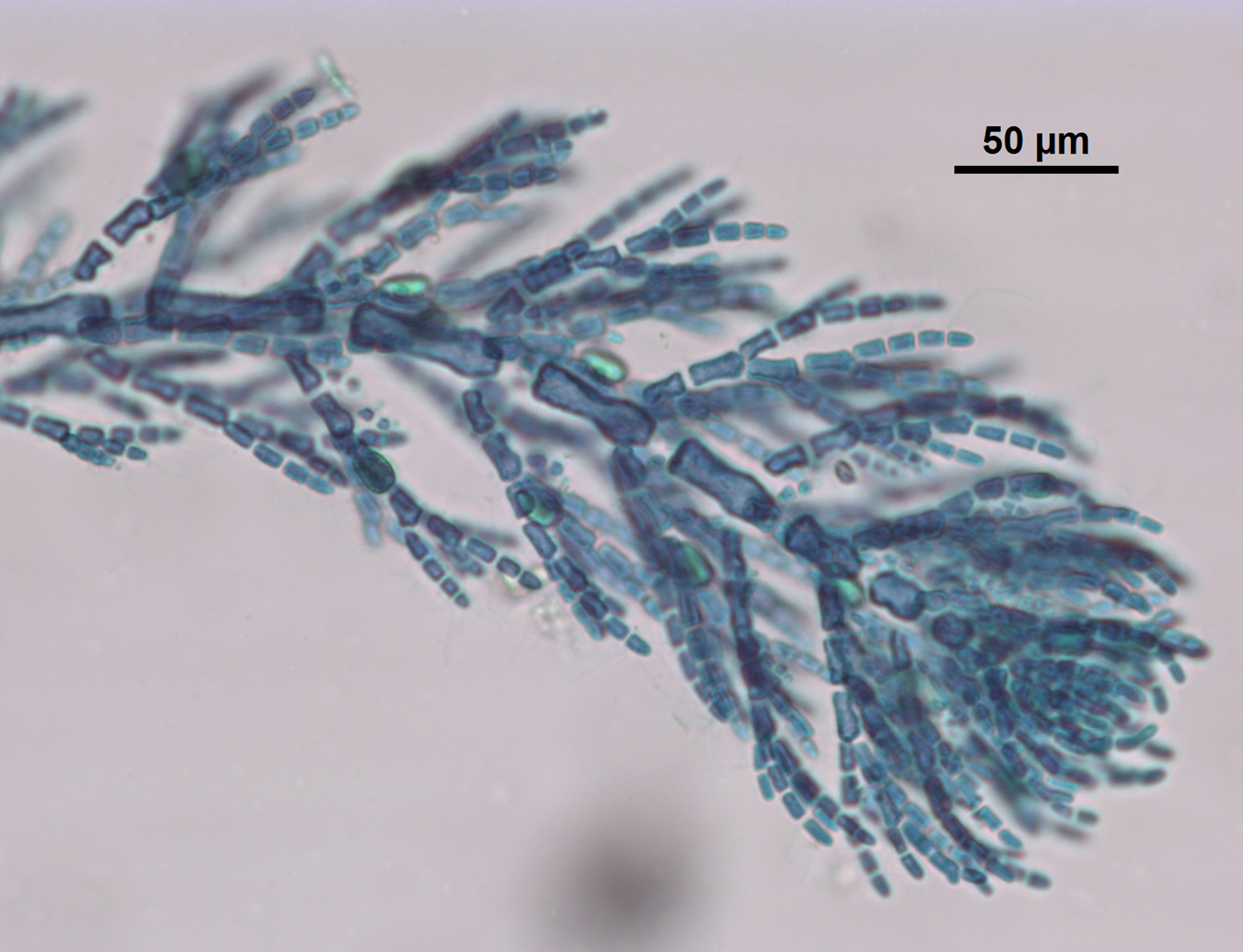
Antithamnionella, Bird Island. This entity may be the same as our Antithamionella sp. Apex of one axis (stained slide).
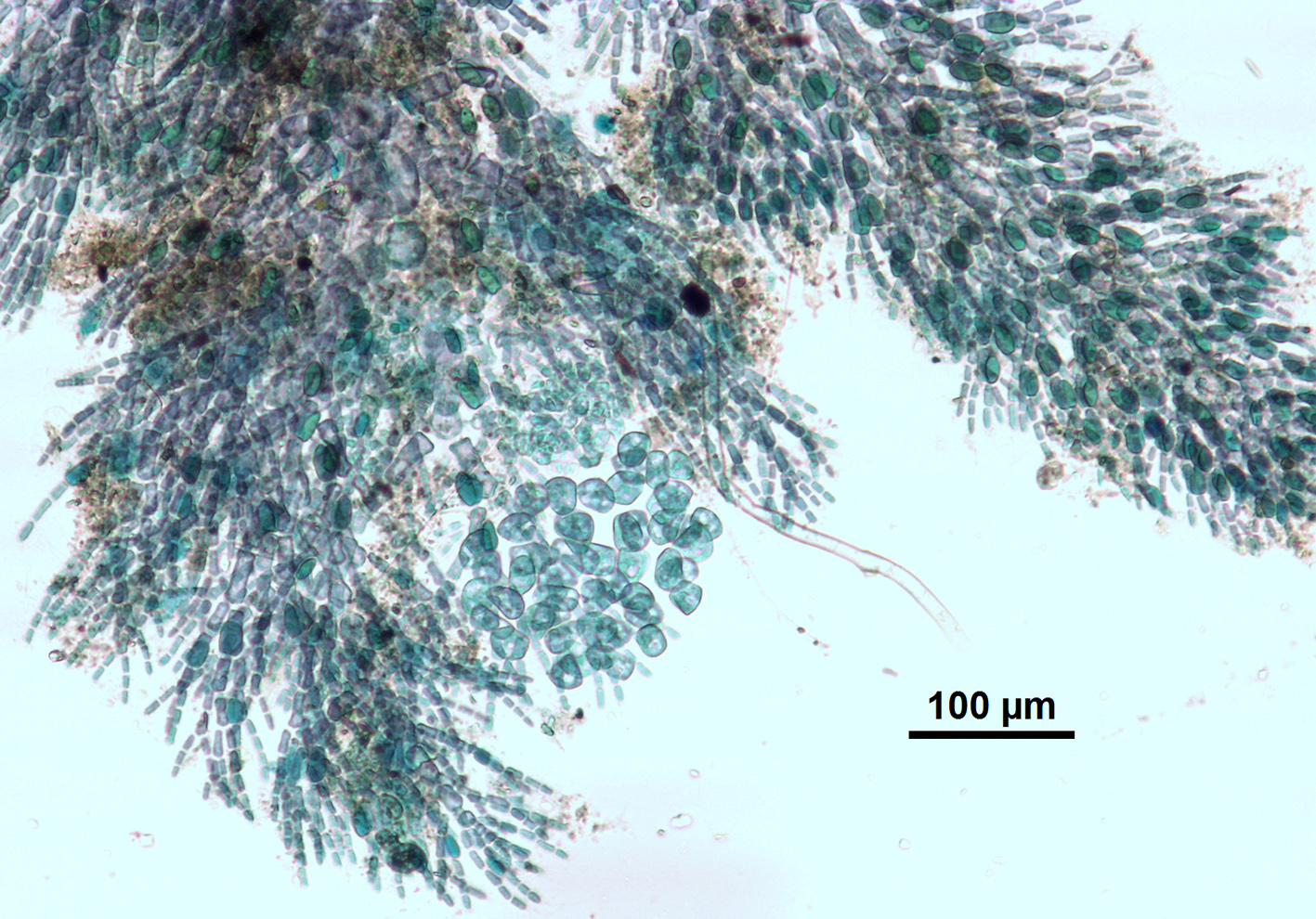
Antithamnionella, carposporophyte, Bird Island. This entity may be the same as our Antithamionella sp. Stained slide.
References Antithamnionella species
Womersley, H.B.S. 1998. The marine benthic flora of southern Australia - Part IIIC. Ceramiales - Ceramiaceae, Dasyaceae. pp. 535. Canberra & Adelaide: Australian Biological Resources Study & State Herbarium of South Australia.
Cite this record as:
Anderson RJ, Stegenga H, Bolton JJ. 2016. Seaweeds of the South African South Coast.
World Wide Web electronic publication, University of Cape Town, http://southafrseaweeds.uct.ac.za; Accessed on 07 January 2026.